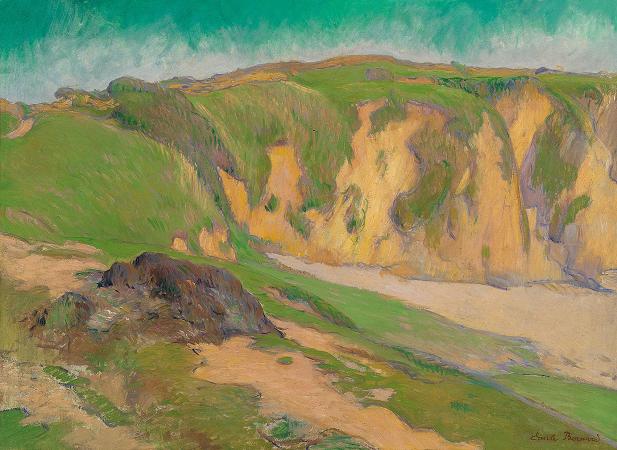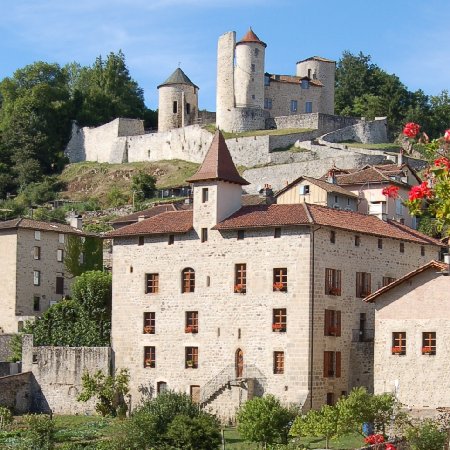Clohars-Carnoet. Clohars-Carnoët is a French commune in the department of Finistère, in the Brittany region. Its inhabitants are called the Cloharsiens This town includes the seaside resort of Pouldu, the port of Doëlan and various beaches including those of Kérou and Bellangenet. Part of the filming of the Netflix series Marianne was filmed here. Clohars-Carnoët is a town on the Atlantic coast located at the south-eastern end of the department. It is bordered to the east by Laita, a ria which separates it from Morbihan. It is connected to this department by the Pont Saint-Maurice and by an intermittent boat passage between the port of Pouldu and Guidel-Plages. According to the definitions of INSEE, Clohars-Carnoët is an urban commune of the isolated city type which does not form part of any urban area, although bordering on the urban area of Quimperlé, but belongs, like Quimperlé, to the Lorient-Vannes urban space. Clohars-Carnoët is part of the canton of Quimperlé and the arrondissement of Quimper. The coastline consists mainly of rocky cliffs of fairly straight general outline facing south, even if their detailed layout is sinuous, forming a succession of small rocky points like those of Beg an Tour, Beg Ero Gamm or La Vache Noire and small coves like those of Port Blanc, Stang Nabec, Stang Souc, Porsac'h, the beaches being more numerous in the eastern half of the municipal coast near Pouldu. Two estuaries are located at the two ends of the municipal coast: to the west, the cove of Doëlan is the maritime part of the estuary of the Pont Sénéchal stream and shelters the small port of Doëlan; to the east, Laitais a ria of broad and deep extension of which Clohars-Carnoët has a good part of the right bank, downstream of the forest of Carnoët, in steep slope and cut out in detail because of the presence of tributary rias like those of the Anse de Stervilin, from the Quinquis stream and the one which notably houses the site of the Abbey of Saint-Maurice. The customs trail runs along the entire coast. The seaside resort of Pouldu occupies an old dune area which has been largely leveled. There are three sandy beaches: the Grands Sables, Bellangenet and the Kérou. The Bellangenet chasm is concerned by a legend reported by Paul Sébillot: At night, the damned who lived in the Bellangenet abyss, dug by the Devil to drown the souls of the wicked there, heard continual roars. The town has 660 ha of wood. The wooded areas are located north of the town. The national forest of Carnoët, a forest of beech and oak, covers 185 ha in the north-east of the town. There are also the woods of Saint Maurice and Kerquilven. The village of Clohars-Carnoët is located inland. He established himself at a certain distance from the coast, on the plateau; this is a characteristic common to many Breton coastal municipalities, the first Breton emigrants settled in the center of their plous inland, probably out of fear of the Saxon pirates. The town has two small ports, Le Pouldu, at the mouth of the Laita, and Doëlan, nestled at the bottom of a cove, near the border with the town of Moëlan -on-sea. Le Pouldu has experienced significant development due to seaside tourist activity. The port of Pouldu, located at the mouth of the Laita, opposite Guidel-Plages, has a hundred moorings Towards the end of the 19 th century, only Bas-Pouldu, near the port, had a certain tourist traffic, many artists-painters coming from Pont-Aven frequenting however the Buvette de la Plage from 1889. In 1895, the Quimperlois Alphonse Marrec built, overlooking the Grands Sables beach, the Hôtel Marrec, enlarged in 1906 and then called Hôtel des Bains where, during the Belle Époque and during the Interwar period. Many wealthy Parisians, Belgians and Englishmen came to stay there, helping to launch the seaside resort of Pouldu. Other hotels were later built: the Hotel des Dunes, the Hotel Ar Men. All are now closed and only campsites now welcome tourists. Boat trips are possible on the Laita between the port of Pouldu and Quimperlé. Doëlan is a small, picturesque fishing port, which has retained its authenticity, even if it is now mainly a marina which has 300 moorings. Towards the end of the 19 th century, only Bas-Pouldu, near the port, had a certain tourist traffic, many artists-painters coming from Pont-Aven frequenting however the Buvette de la Plage from 1889. In 1895, the Quimperlois Alphonse Marrec built, overlooking the Grands Sables beach, the Hôtel Marrec, enlarged in 1906 and then called Hôtel des Bains where, during the Belle Époque and during the Interwar period. Many wealthy Parisians, Belgians and Englishmen came to stay there, helping to launch the seaside resort of Pouldu. Other hotels were later built: the Hotel des Dunes, the Hotel Ar Men. All are now closed and only campsites now welcome tourists. Boat trips are possible on the Laita between the port of Pouldu and Quimperlé. During the second half of the XIX th century, Doëlan was a significant fishing port for sardines, with a hundred boats sardine employing about 500 sailors and four canneries.
more...



